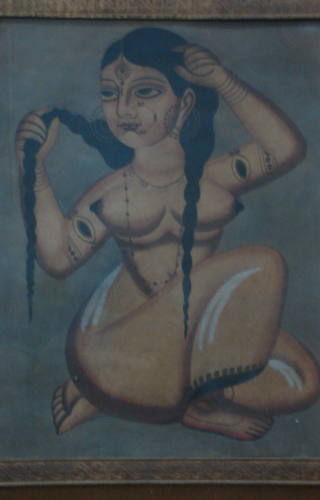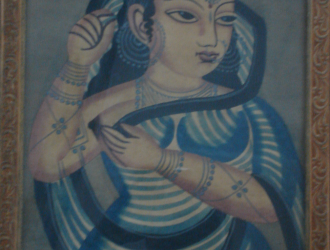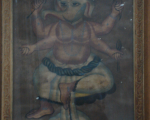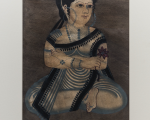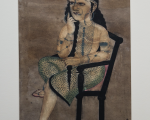Popular in the mid-nineteenth to mid-twentieth century, Kalighat paintings were sold by patuas (painters) from rural Bengal who migrated to Calcutta in search of a better life and settled near the Kali temple in Kalighat.
Calcutta’s urban setting had immediate impact on the patuas. From entertainers who survived on donations from the art of patachitra (narrative stories on handmade cloth scrolls) in the villages, they transformed into painters who sold their art for money. From painting on scrolls, the Kalighat painters started painting on single cloth pieces, and, eventually, folio-sized paper that could be easily sold to tourists and pilgrims who visited the temple. Kalighat paintings were in huge demand across India, which could not have been met without the assembly line production process that the art tradition followed, where sketching, modelling, shading and colouring were all done by different people in an artist family.
Kalighat paintings, characterised by bold lines and vibrant colours, initially focussed on mythological tales but slowly adapted to urban culture, drawing from news items, and engaging in criticism of the colonial rulers and their bureaucratic acolytes.
The rise of cheap prints and imitations in the market in the early twentieth century rang the death knell for hand-painted Kalighat paintings. The painters were forced to seek other forms of work to sustain themselves, and the paintings that once lined the streets of Calcutta became museum artefacts.
Today, Victoria and Albert Museum in London has the largest collection of Kalighat paintings in the world which include watercolours, line drawings and lithographs. In India, Kalighat paintings can be seen at Victoria Memorial Hall, Indian Museum, Gurusaday Museum, Birla Academy of Art and Culture, Ashutosh Museum, and Shantiniketan’s Kala Bhavan.
